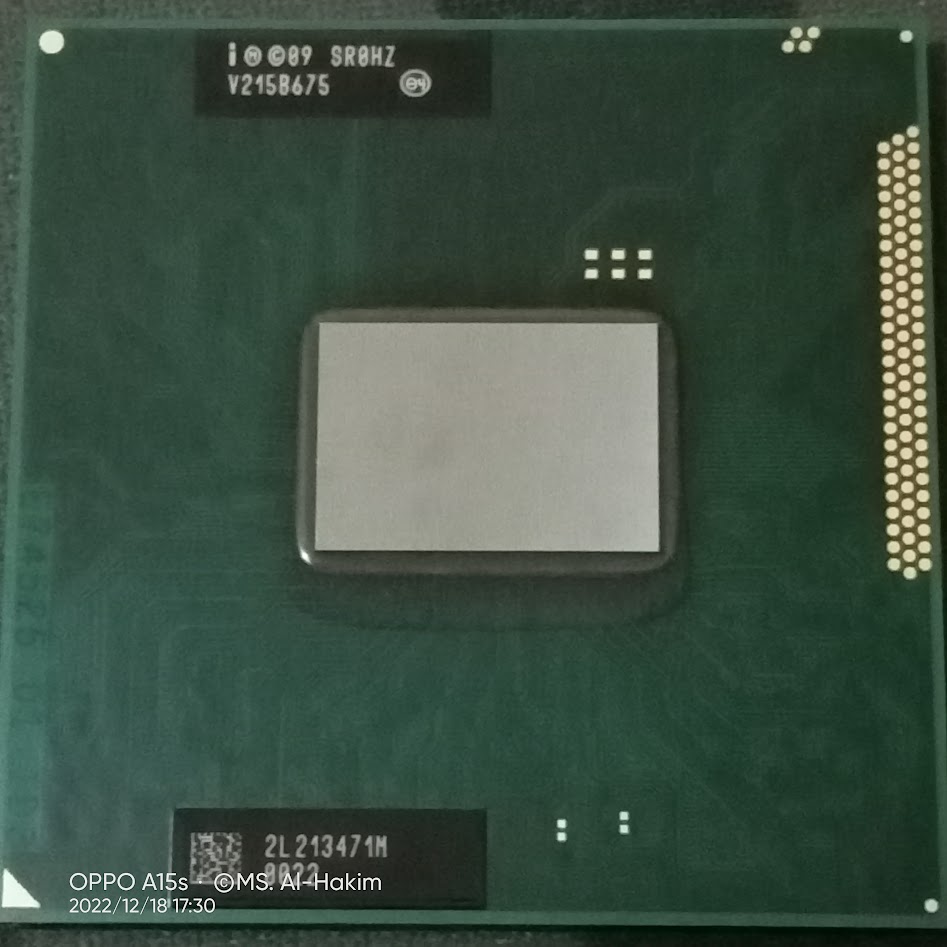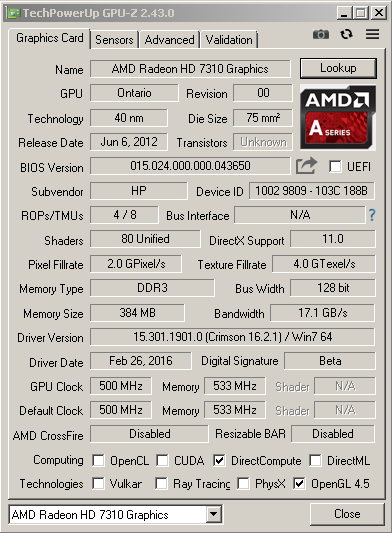Comparing: AMD Radeon HD 7310 vs Intel HD Graphics Mobile (Sandy Bridge)
In this comparison, we analyze two Videocards: AMD Radeon HD 7310 and Intel HD Graphics Mobile (Sandy Bridge), using synthetic benchmark tests to evaluate their overall performance. This side-by-side comparison helps users understand which hardware delivers better value, speed, and efficiency based on standardized testing. Whether you're building a new system or upgrading an existing one, this benchmark-driven evaluation offers valuable insights to guide your decision.

Intel HD Graphics Mobile (Sandy Bridge)
| Type: | Videocards |
|---|---|
| Brand: | Intel |
| Model: | HD Graphics Mobile (Sandy Bridge) |
Specification Comparison Table
This specification comparison presents technical details of several devices or components to help you understand the key differences between each option. Use this table as a reference to determine which device best suits your needs.
| Specification | AMD Radeon HD 7310 | Intel HD Graphics Mobile (Sandy Bridge) |
|---|---|---|
| Architecture | Terascale 2 | Sandy Bridge |
| Codename | Ontario | Sandy Bridge GT1 |
| Buswidth | - | - |
| Clock | 500 MHz - - | 650 MHz - 1050 MHz |
| Memory Clock | 384 DDR3 (SHARED) | SHARED |
| Technology | 40 nm | 32 nm |
| Interface | IGP | IGP |
| Technology | 40 nm | 32 nm |
| Segment | Laptop | Laptop |
Submission Comparison Table
This submission comparison table displays the number and details of benchmark data submissions from various devices or components. This information helps you understand the performance based on the benchmarks that have been tested, as well as providing an overview of the consistency and popularity of the available benchmark results.
| No. | Benchmark Software | AMD Radeon HD 7310 | Intel HD Graphics Mobile (Sandy Bridge) |
|---|---|---|---|
| 1 | 3DMark2000 |
7087 marks |
10911 marks |
| 2 | 3DMark2001 SE |
7356 marks |
10406 marks |
Submission Comparison Chart
This chart visualizes the benchmark scores comparison between two hardware devices based on submitted data.
Media Gallery
A collection of photos of tested hardware. These images can help you identify the physical form, model, and variant of the hardware in question. These photos are from our own documentation, and if they are not available we may not be able to document them.
About Hardware AMD Radeon HD 7310
The AMD Radeon HD 7310 is an entry-level integrated graphics processor (IGP) that is part of the AMD E1-1200 APU, launched in 2012 for budget-oriented laptops. Based on the Terascale 2 architecture, the Radeon HD 7310 features 80 stream processors (shaders) and runs at a clock speed of up to 500 MHz. While modest in terms of raw power, this GPU was designed to handle essential computing needs with minimal power consumption, making it ideal for ultraportable laptops and low-cost netbooks of its era.
The Radeon HD 7310 supports DirectX 11 and UVD3 (Unified Video Decoder) for smooth HD video playback, making it fairly capable for multimedia tasks such as watching YouTube videos or playing DVDs. However, it does not have dedicated VRAM, relying instead on shared system memory, which means that its performance is significantly influenced by the RAM configuration single-channel DDR3 memory limits its potential, while a dual-channel setup can offer slightly better bandwidth for graphical tasks.
In terms of gaming, the HD 7310 is only suitable for very light or older games, and even then, users will need to lower the resolution and graphics settings to achieve playable frame rates. Titles like Plants vs. Zombies, Angry Birds, or older 2D games can run reasonably well, but 3D games or anything newer than 2012 will likely struggle. The GPU’s aging architecture also limits compatibility and performance in modern applications and web-based 3D content.
Despite its limitations, the Radeon HD 7310 can still serve a purpose in legacy laptops such as the HP 1000 1b05au, especially for users who need a machine for basic productivity tasks, internet browsing, and light media consumption on older operating systems like Windows 7 or Windows 8. For budget-conscious users who still own or restore older laptops, this GPU represents a practical, if dated, solution for everyday computing.
Hardware Detail:
Device: HP 1000 1b05au
CPU: AMD E1-1200
RAM: 4GB DDR3 Single Channel 2 DIMM
OS: Windows 7, Windows 8
Wednesday, 26 December 2012 14:27:36 | Update: 1 month ago
About Hardware Intel HD Graphics Mobile (Sandy Bridge)
Intel HD Graphics (Sandy Bridge) is Intel's second generation integrated GPU, present in processors such as the Intel Celeron B815, released in 2011. This GPU uses the Sandy Bridge architecture and has between 6 and 12 execution units (EUs) depending on the CPU model. On the Celeron B815, this GPU runs at a base frequency of 650 MHz and can go up to 1.05 GHz through the Dynamic Frequency (Turbo) feature.
Although not designed for high performance, Intel HD Graphics Sandy Bridge brings improvements over the previous generation, including support for DirectX 10.1, OpenGL 3.1, and HD video decoding hardware through Intel Quick Sync Video technology. This allows 720p to 1080p video playback to run quite smoothly, and the low power consumption is suitable for energy-efficient laptops.
However, due to the limited number of execution units and the absence of dedicated VRAM, the graphics performance is only suitable for light tasks such as browsing, watching videos, and using office applications. Light or older games such as Plants vs Zombies, Counter-Strike 1.6, and GTA: Vice City can still be played at low resolutions and minimum graphics settings.
Compared to newer generation integrated GPUs such as Intel HD 4000 and above, the performance of Sandy Bridge HD Graphics is already quite behind. But for an entry-level laptop like SAMSUNG 300E4Z with 4GB DDR3 Dual Channel RAM, this GPU is still worth using as a basic graphics solution in operating systems like Windows 7.
Overall, Intel HD Graphics (Sandy Bridge) on Celeron B815 is a simple yet functional graphics solution for light daily use, especially on older generation laptops that can still be utilized for basic productivity tasks and light entertainment.
Hardware Detail:
Device: SAMSUNG 300E4Z
RAM: 4GB DDR3 Dual Channel
OS: Windows 7
Sunday, 27 November 2022 02:25:40 | Update: 1 month ago





